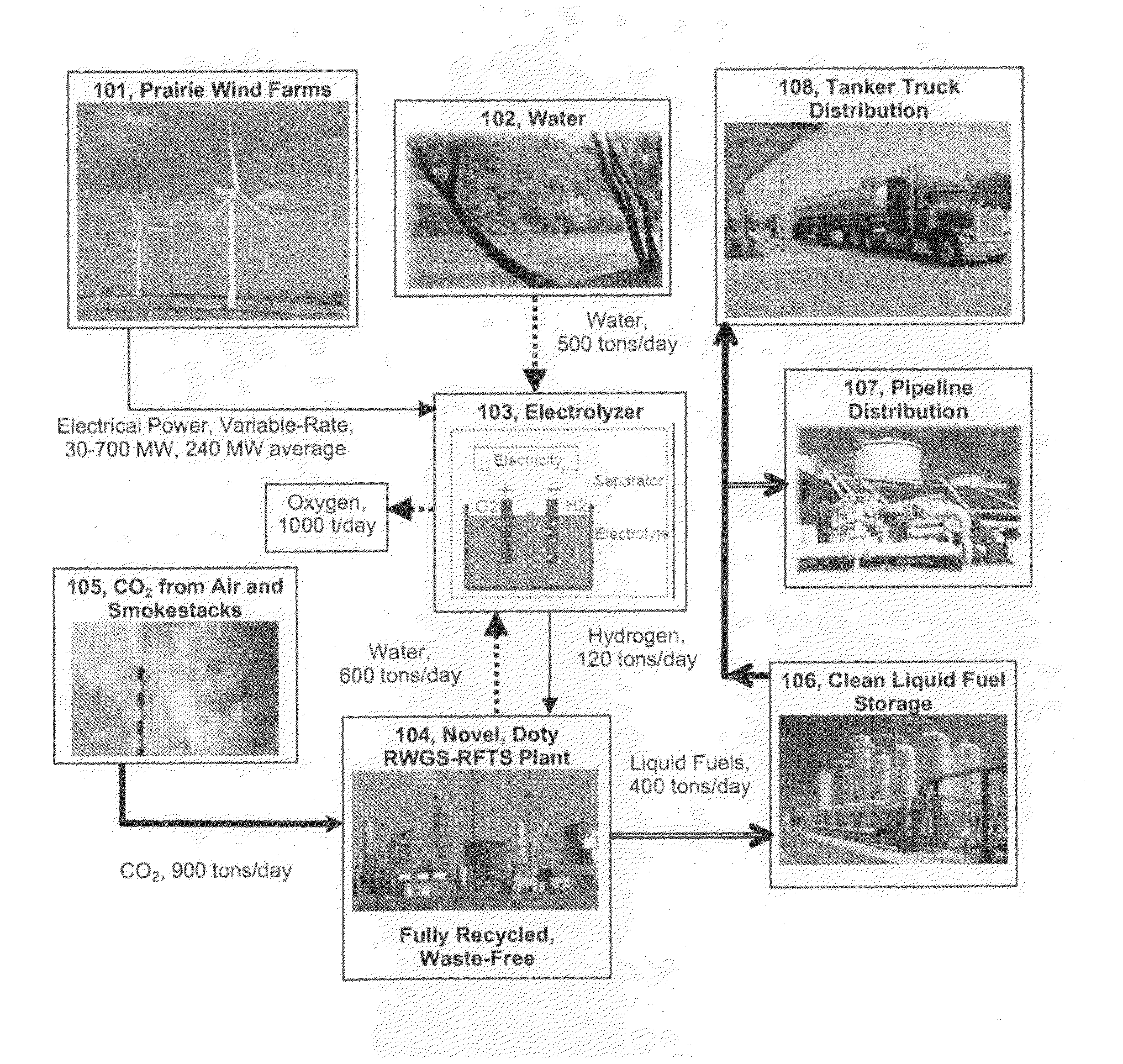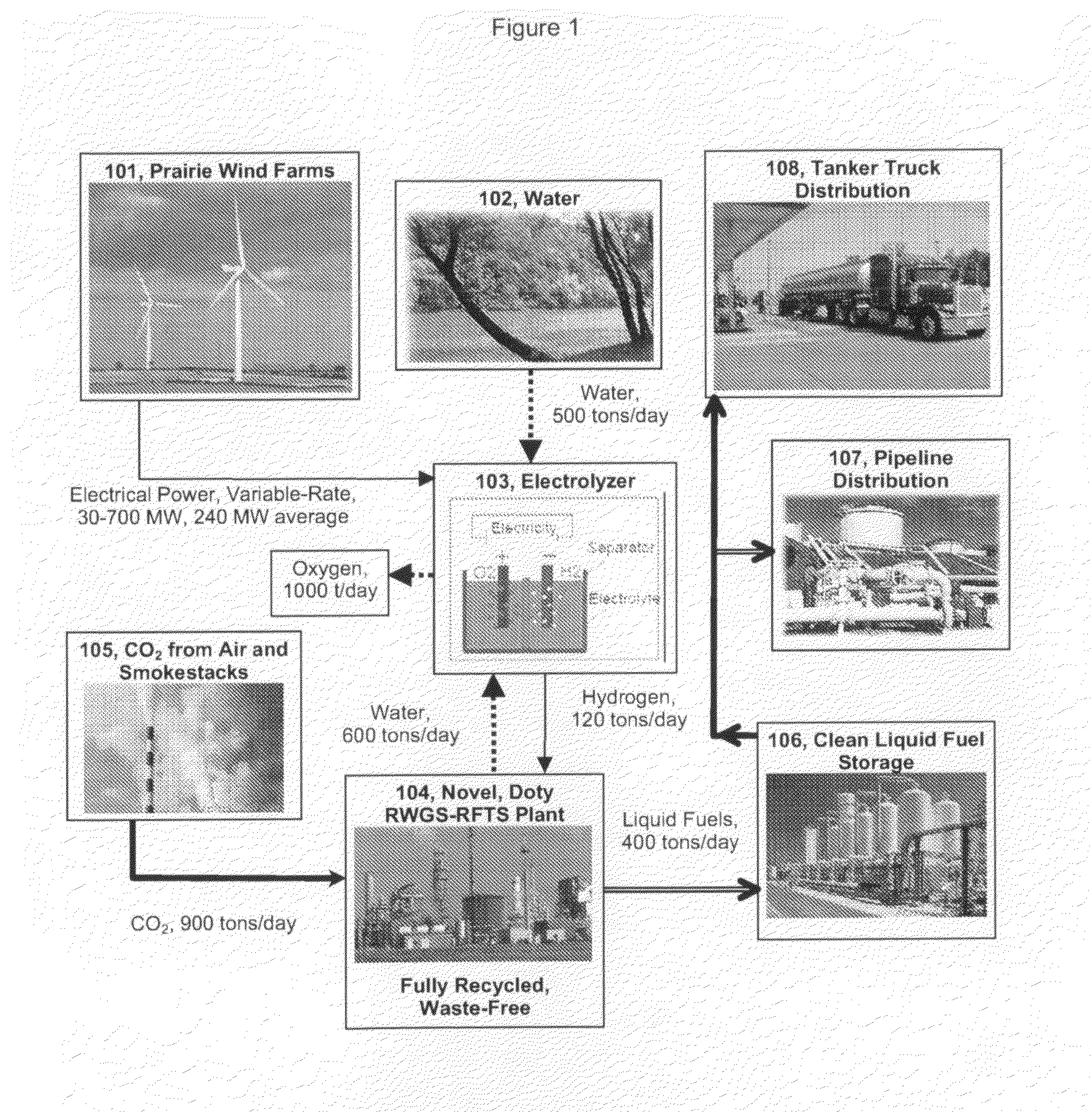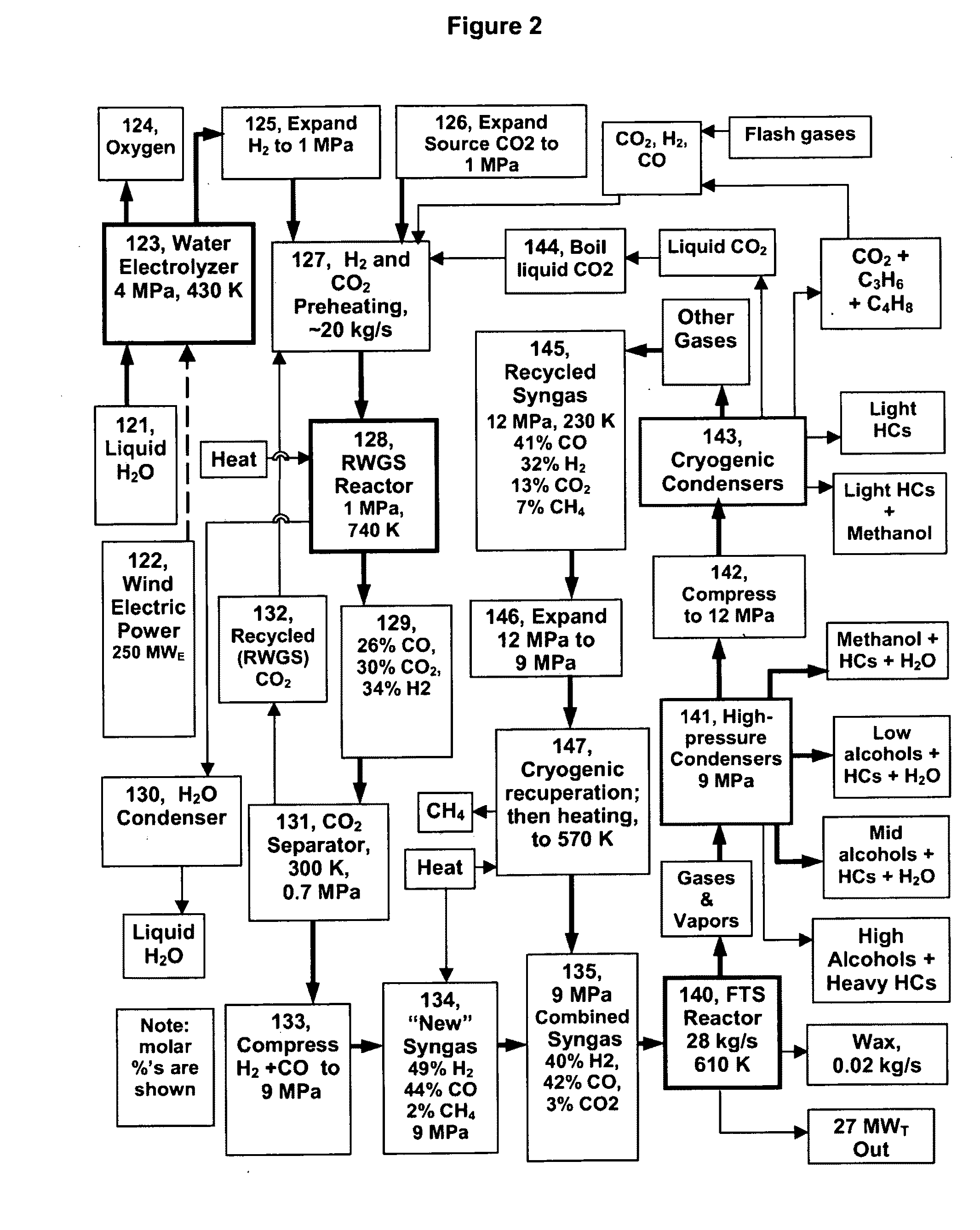Solar photovoltaic (PV) is currently about six times more expensive (per kWhr) than wind in favorable areas, and the installed cost of solar PV has increased in recent years.
The perceived challenge is getting wind energy from good sites to where and when it is needed, both for the transportation sector and for the
power grid.
); and higher corrosiveness in engines.
Widely noted problems with biofuels are the lack of available land to adequately
handle the global
oil demand and the severe effect on food prices.
Optimistic projections indicate that even devoting all the world's
arable land to biofuels production (a most untenable situation) would be insufficient to meet the world's projected demand for liquid fuels by 2030.
But the assumption generally has been that the source of the
hydrogen would be from nuclear breeder reactors (though mention has been made of
renewable energy sources) and that it would be cheap, so little thought has been given to dealing with the variability issue or the details of maximizing
process efficiency.
As the price of
uranium has increased by an
order of magnitude over the past seven years and fully functional breeder reactor cycles are not expected to be available for at least 20 years, the assumption of cheap, abundant, nuclear energy seems ill founded.
This is a result of the higher
octane and higher
autoignition temperature for mid alcohols (636 K autoignition for
ethanol compared to diesel's 470 K), as these influence theoretical efficiency limits in both Otto and compression-ignition cycles.
In
natural gas (NG) GTL plants, and even more so in
biomass or
coal GTL plants, a huge amount of effort and cost must be put into
syngas control and
clean up, as contaminants can quickly deactivate the FTS catalysts.
The losses associated with the required compressors and expander turbines have often amounted to more than 6%, partly because there has been inadequate concern about non-isentropic expansions of FTS product gases.
For an H2+CO2 source, most of these have theoretical chemical efficiency limits between 75% and 83%, so their direct effect on total
chemical conversion efficiency is small if they can be efficiently utilized.
There has been substantial progress in separation technologies (cryogenic methods, adsorbents, and membranes) over the past three decades.9. The enormous amount of
waste heat generated in the FTS reactor has not previously been very efficiently utilized.
However, even if this is not yet practical, the heat needed now for endothermic CO production is much less than for
methane reforming.
A high-
sulfur syngas is clearly unacceptable, as it will poison all the other catalysts in the
plant and require expensive
clean up of the products.
In general, there is a trade-off between maximizing CO conversion and maximizing yield of mid-alcohols, which emphasizes the importance of efficient CO recycling in the mid-alcohols
plant—a feature that has generally not been well implemented.
The first
slurry-
bed (
bubble column) reactors came on line in the 1990s and permitted substantial reactor size and cost reductions as well as improved process condition control, but they were only effective with low-temperature catalysts.
There will always be industrial need for
methanol, but it is not a good commercial
motor fuel, as noted earlier.
The reverse of the RWGS, the WGS, is easy to achieve at low-temperatures (450-550 K) and high pressures using Cu / ZnO catalysts, but the needed low temperature RWGS has seen relatively little investigation and utilization.
Generating syngas from CO2+H2 has not been an objective of much prior work, due to the expense of H2 from electrolyzed water compared to the cost of
methane.
Until now, the market has not had a well articulated need for an optimum low-temperature RWGS catalyst.
The RWGS reaction has often been seen as an undesirable competing reaction to be suppressed—as in
methanol synthesis.
Some have thought that the RWGS cannot be made to work adequately below 720 K, and this may be true at high reactor pressures (over 5 MPa) with high space velocities and low excess CO2 and H2.
However, it is not difficult to accommodate excess H2 and CO2 in the product
stream, low reactor pressures, and moderate
space velocity.
The dominant limitation in the catalyzed RWGS reaction is the WGS reaction, as the reverse is always also catalyzed.
All of these methods are more expensive than simple H2O condensation, and most add significant additional gas compression penalties.
However, effective heat pumps for this temperature range have not been shown to be practical; and even if possible, they would be quite expensive and achieve at best a factor of two reduction in the amount of electrical input power required.
However, this is still not high enough to readily drive the RWGS reaction, at least under variable conditions—except perhaps if both the CO and the H2O in the RWGS are held to low levels.
However, the difference in
system efficiency between the two options (burning low-value byproducts or using FTS heat) is only about half that amount if highly effective methods are available for conversion of
waste heat to electrical power, as discussed briefly in the next section.
Previously, there has not been a very good method for utilizing the WGS products and
waste heat.
Yet, it seems that few have exceeded 55% of the second-law efficiency limits.
This is largely because the
latent heat of
vaporization and the differences in specific heats between the liquid and gas phases make full optimization (minimizing irreversibilities) impossible for a single heat source.
In addition, ORCs have generally been very expensive, partly because of poor appreciation for the importance of a high condenser pressure in minimizing exchanger costs.
The importance of approaching isothermal conditions in
heat transfer has been understood—for more than three decades, but methods of doing so in gas-to-gas recuperators have had very limited success.
Liquid
sodium is mentioned as a possible
working fluid, but
sodium is a highly reactive
metal that is difficult to work with and thus is expensive, even though it is very abundant.
They prefer the use of rather cool water as the
coolant fluid, apparently to allow the heat exchangers to be smaller, though this increases thermal gradients within the reactor and makes efficient high-grade heat
recovery for other useful purposes impossible.
As noted earlier, one area usually seeing substantial losses in the GTL
plant—especially in smaller plants—is in the gas compressions and expansions, as the FTS reactor needs to operate at 0.5 to 20 MPa (5 to 200 bar).
Inter-cool may be used to reduce the work input needed for high compression, though this may not be advantageous if the product then needs further heating—unless excess waste heat is available.
One of the many problems with his concept is that it utilizes CO2 that has already been sequestered in the ocean.
They apparently favor nuclear energy because their process is not sufficiently efficient to be competitive if
renewable energy is utilized, and they believe very large
nuclear power plants can produce hydrogen at low cost.
However, the RFTS plant would not be able to respond as quickly, so some local
hydrogen storage would be needed—preferably at least 6 hours worth—for efficient power-down, standby, and power-up cycles.
While compact, light-weight
hydrogen storage in small quantities (as needed for fuel-
cell vehicles) is quite expensive, bulk hydrogen-gas storage at moderate pressure (1-15 MPa) is not—around $400,000 /
ton, or about $12M for the 250 MW plant (which will cost $1B total, including the wind farm).
The above suggested H2 and LOX minimum storage amounts are about one-third the fuel-up requirements for the
space shuttle and are not difficult to accommodate safely.
Substantial challenges in RETS will arise from dealing with the major variabilities in wind and solar with limited
hydrogen storage.
 Login to View More
Login to View More 


